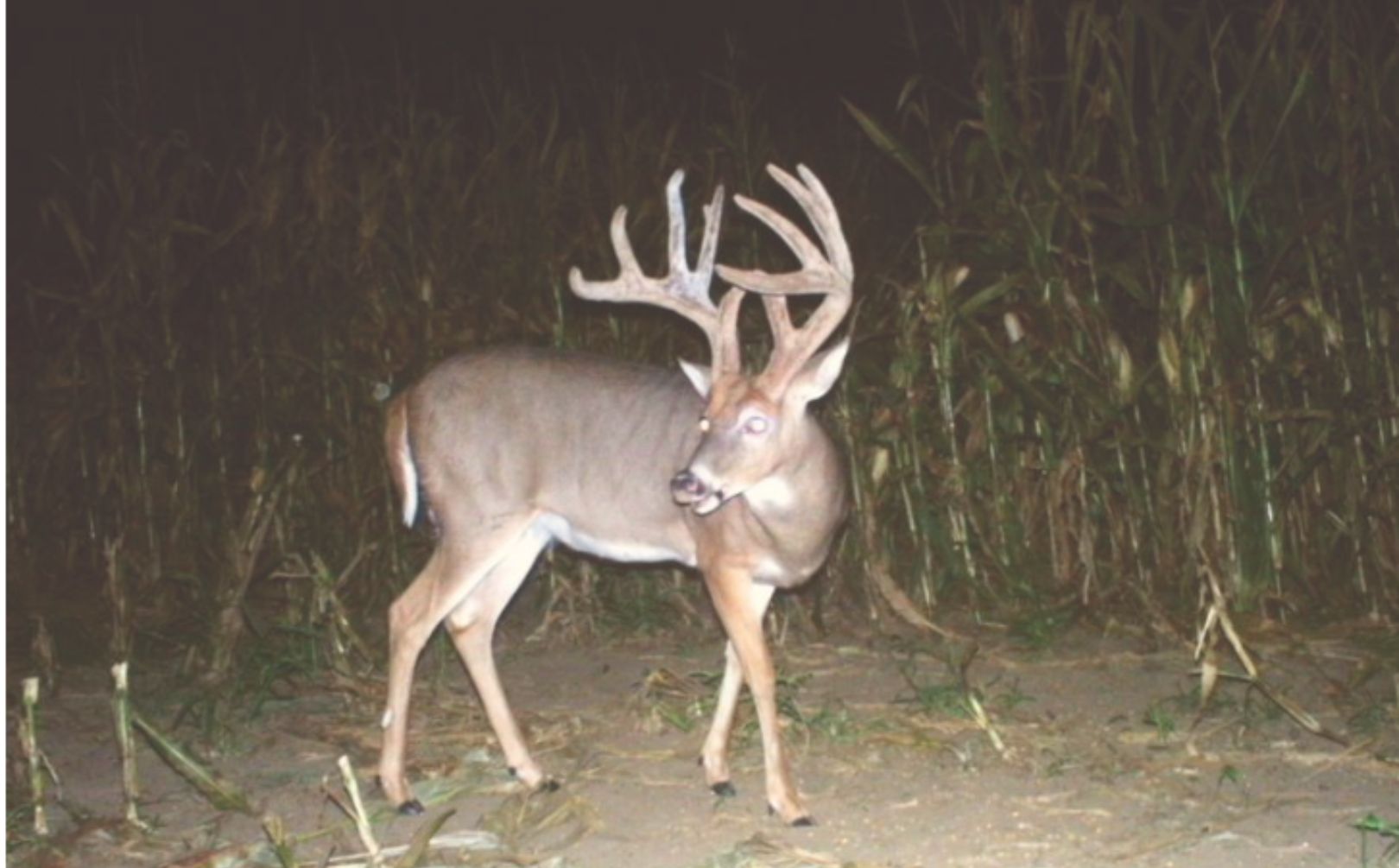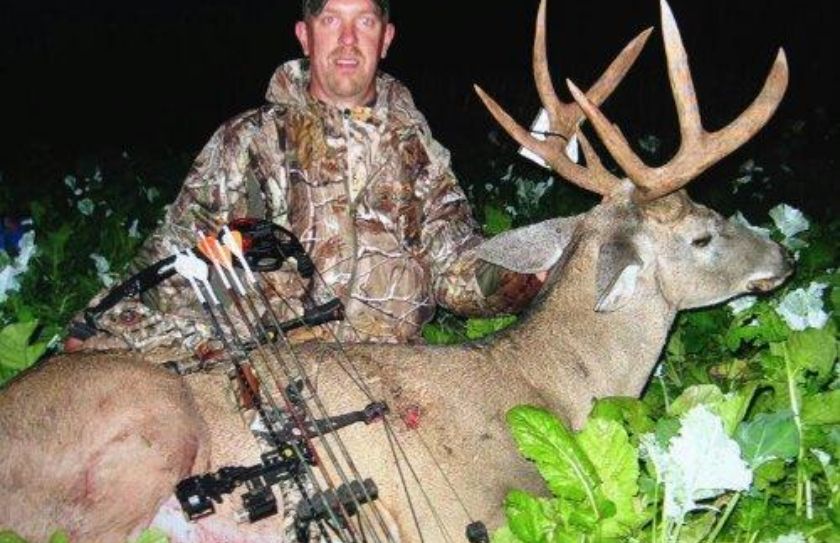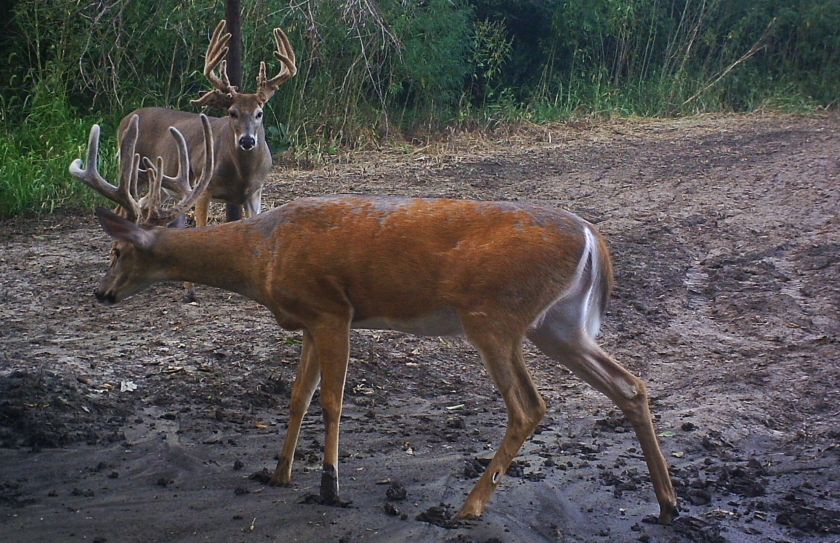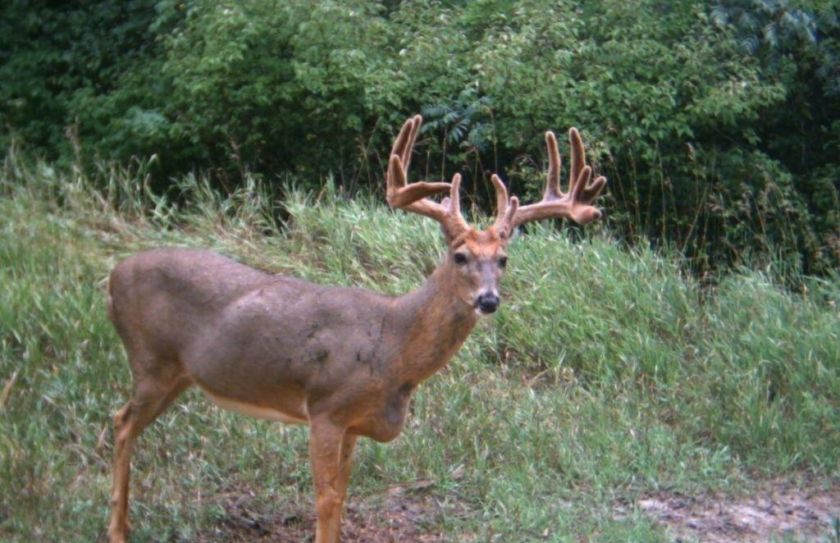
Are you getting pictures of Summer giants? If so, why wait for the rut to hunt? Early season bucks have a tendency to re-locate from their lazy Summer habitats to their core Fall hangouts, and if you think about it, it makes perfect sense! During the growing season bucks prefer the Summer food sources of alfalfa, beans and natural forages. Bucks also seek the open understory of mature hardwood forests to find both fewer bugs and cooler temps. Both of those important pieces of warm season habitat fail to satisfy the necessities of the hunting season. During the Fall, bucks crave high stem count honey holes of hardwood regen, briar-choked rocky points and various upland settings including a combination of conifer and hardwood pockets, shrubs, various grasses and weeds. They also enjoy the cool season offerings of various greens, corn and standing soybeans towards the end of the season. Regardless of the cover type that you may find on your land, if you are capturing those early season pics that make your head spin with early season fever...there is never a better time to enter the woods than opening day of archery season! Here are 5 important early season archery hot spots for mature bucks:
1. Micro Hotspots of Waterholes and Natural Food Sources:
Small, man-made waterholes of hand dug ponds or 100 gallon cattle tanks buried into the ground are outstanding choices, but so is a great early season natural food source! A cluster of mature apple trees or oaks can be outstanding locations to take a stand from Mid-September to Mid-October. The more defined and precise the location the more dependable the movement to present yourself with a great shot within bow range. Also, precision deer movements equal precision hunting movements, where you can access stand locations with a minimal chance of spooking game as well as giving yourself a great downwind "deerless" area to blow your scent into.
*When can you take advantage of a small hotspot of whitetail attraction during the first few days of the season?
A great time to hunt early season waterholes and small food sources is during the afternoon, between a well-known buck bedding area and a major evening food source. The movement is highly predictable, and unlike an approach during the morning hours you can typically count on very few deer being present at the hotspot during your approach.
2. The Long Transition:
Unless they feel some hunting pressure, summer-trained whitetails are often still in their warm season patterns well into early October. What does this mean for you? It means you can take advantage of long, lazy feeding movements between bedding areas and large food sources. Open hardwood settings of light woody browse and acorns can be the perfect location to hang a stand, in particular along side a natural habitat transition of various age and types of timber, as well as lengthy bench systems that funnels deer movements.
*When is the best time to connect on a lengthy movement between a late Summer food source and a major bedding area?
After an early season cold-front, deer can be extremely hungry! High winds, falling temperatures and missed quality feeding opportunities over a period of 24-36 hours dictates an often ravenous pattern of feeding. Sneaking into an early morning transition of 300-400 yards long or longer between feeding and bedding areas, will limit your chances of spooking any whitetails that may still be feeding...or already in their beds. If your toes begin to grow a little chilled by the morning hours it is the right time to hunt, and if you are located within a few hundred yards of food you may end up with a perfect opening day stand location!
3. One and Done Bedding Sits:
If you are getting pictures of early season bucks, you may have a great indication of which way they are coming from to feed on an evening food source. And if you have an idea of where they are traveling from, you may also have a great idea where they are bedded during the daytime hours. That's great! Because if you can pinpoint a mature buck's bedding area to within an acre or less, he is a lot more vulnerable. So it's easy, right? Just set up a stand early in the Summer and then slip back into the location and shoot him, right? Well...of course, "No", it isn't that easy.
*When should you slip into a bedded buck's core sanctuary to hunt during the early season?
Bedding areas are nearly impossible to sneak into during the middle of the day, at a time when they are full of the eyes and ears of deer that spend their entire day alert to any approaching danger into the their most critical form of daily habitat. At the same time, what makes their most important piece of habitat so vital to their survival, can at the same time help you to get into bowrange-they feel incredibly safe! Counting on a cold, frost morning to potentially delay a buck's arrival into his daytime bedding area, you may have a window of opportunity to take a stand position well before daylight. Off-season scouting should reveal exactly where a buck is bedded within every bedding area in the area that you hunt. By knowing where that particular buck is bedding, you can access to the bedding area well away from the food source and into the bedding area with a low % of chance of spooking your buck. The best part? You can take a chance one time and if you blow it, you have plenty of time before using that same stand during the conditions of the Pre-rut later in the year.
4. Food Plot Lines:
One of my favorite ways to create an early season opportunity at an old, wary buck is to add a small travel plot near his bedding area. A small, hidden field or natural opening works very well to add the food, but even more importantly it has to be both very close to where he spends his daytime hours, but at the same time hidden from him for your approach to a stand location. There also has to be very thick, secure cover leading from his bedding area to the food source, as well as leading away from the small plot as he then travels towards a distant, high quality evening food source. Sound like a lot to put together in one spot? It is! And to create an even greater level of complexity, adding a small waterhole can really raise the level of attraction. Of course the "line" of food is meant to capture a buck from the end or side of the plot, and then carry him through to the end of the plot towards the evening food source. A 15-20' wide plot is all that you need, and one of my favorite locations features a plot approximately 150 yards long with 2 stand locations for completely different wind patterns.
*So after you create your remote food plot line of deer movement, when do you access one of your stand locations?
Because the micro-plot will be located so close to a bedding area, it may be very difficult to access during the pre-dawn hours for fear of spooking a buck as he has a snack before entering his bedding area. However, about an hour after sun-up can be an outstanding time, especially with a rising full moon during the evening. Why, because deer feed 5 times during a 24 hour period. When a moon is rising in the evening they will feed heavily under the safety of a well-lit evening well into the middle of the night. It becomes a very social event, and the deer will be very active. However, just like us if we eat a lot for one meal...we typically don't for the next (except for Holidays!). That makes the early morning feeding extremely light, creating a much higher activity level for the late morning period. Getting into a small food source next to a buck bedding hotspot well after light, and waiting until after noon can be a great strategy for the early season (even later during the rut) with a very low impact on the area. Of course an afternoon approach can be outstanding as well, but don't underestimate the power of the moon to create a late morning feeding frenzy close to a bedding area...especially if the morning weather conditions are cold and calm!
5. Hidden Ag Corners:
Have you ever driven around in the evening and looked for bucks during the Summer time? I have...and I also sit to glass, film and take pictures. It's actually one of my favorite things to do with my wife! Do you ever wonder what is just over the slight rise in the ag field? Or just around the corner of the corn? I do...and the same reason you probably wonder too, is the same reason a mature buck prefers these locations as his entrance point to the field-it is completely hidden from our view! The set-up is easy because you just need to find a hidden corner that a mature buck calls home. Maybe that is a tough chore in itself, but really there is not much else to do but hang a stand, and possibly add a 100 gallon water tank that you dig into the ground to further pin-pinpoint his entrance. The hard part though, is first the access, and then making sure that every deer in the field isn't blown away by your scent while in your bowstand. Making sure that your downwind is covered by steep terrain, open hardwoods, a large pasture or some other type of "deer-less" acreage is a critical feature to have. This gives a safety net for your scent while on stand, as well as both an entrance and exit route.
*When can get into a hidden ag corner without being seen?
Part of knowing "when" for all 5 of these potential early hotspots is knowing "where", first. As in where are the deer located when you wish to access the stand, and where are they located when you leave. The best time to get into the hidden corner of an ag field is when you are sure the deer can't see you walking in, or aren't already there feeding. Although you are going to have to rule out an early morning trek into your stand, don't rule out trying an access just after daylight when you can see that the field is clear of deer. Also, an early afternoon access is a fairly safe bet, especially if you can travel through adjacent open hardwoods or alongside a deer-less habitat feature such as a pond or pasture. Later in the rut, an inside corner to a hidden ag field can also double as an outstanding daytime cruising corner for mature bucks!
Conclusion
Do you have outstanding Summer food and cover for mature bucks? With a few highly defined early season set-ups there is no time better than the present for an outstanding opportunity to end your season early. Personally, my cover is geared more towards the Fall, with cool season annual food sources and thick security cover. The mature bucks I see typically don't start taking up residence until the beans turn brown, and the alfalfa has been cut for the last time. So, I have to admit I get a little jealous of you folks that have some core, warm season monsters to take a chance with early in the year! If you are like me and can't wait to get into a treestand, I urge you to find a few of your set-ups that match as many of the above "hot-spot" descriptions as you can, and develop a plan of attack as soon as the season opens


